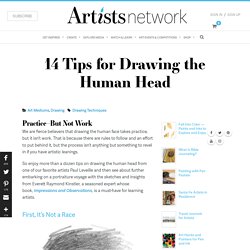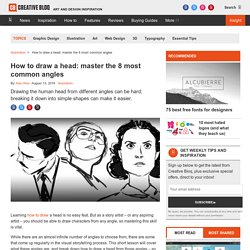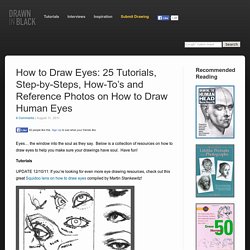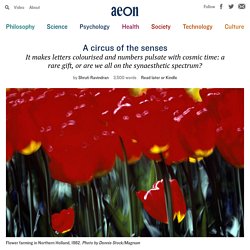

Simple Head Sketching Exercise - Andrew Loomis Drawing Study #1. Here is an Artist's Guide to Drawing the Human Head. We are fierce believers that drawing the human face takes practice, but it isn’t work.

That is because there are rules to follow and an effort to put behind it, but the process isn’t anything but something to revel in if you have artistic leanings. So enjoy more than a dozen tips on drawing the human head from one of our favorite artists Paul Leveille and then see about further embarking on a portraiture voyage with the sketches and insights from Everett Raymond Kinstler, a seasoned expert whose book, Impressions and Observations, is a must-have for learning artists. First, It’s Not a Race I drew The Fisherman in pencil on Canson heavyweight drawing paper. How to draw a head: master the 8 most common angles. Learning how to draw a head is no easy feat.

But as a story artist – or any aspiring artist – you should be able to draw characters from any angle, so mastering this skill is vital. While there are an almost infinite number of angles to choose from, there are some that come up regularly in the visual storytelling process. This short lesson will cover what these angles are, and break down how to draw a head from those angles – so grab your best pencils and follow along. The head is an incredibly complex structure.
I’m not smart enough to process all that complexity at the same time, so I try to break it down into a couple simple shapes, which, for heads, is (1) a sphere for the cranium, and (2) a pyramid for the nose. Using these two basic shapes, you can set up the foundation for a drawing of a head at any angle. Tips on Drawing and Shading a Realistic Face.
Figure Drawing 1: Anatomy of the Head with Dan Thompson. Reilly Method for Drawing the Head Structure. How To Draw A Human Figure - Drawing The Figure From Your Mind. CHARACTER DESIGN REFERENCES (www.facebook.c… Art Inspired / Value and Tone. Value is a quality of colour, how light or dark that colour is.

If you took a black-and-white photograph of the colour, what shade of gray would you get? That's value, also known as tone. Chiaroscuro Pencil Shading Exercise (worksheet provided) Value Step Scales using Graphite Pencil (Otis College) From the Otis Foundation course Color and Design: Learn basic techniques of creating value steps using graphic pencil.
How to Draw the Eye - Different Angles. Gesture Drawing & People Sketching with a Brush Pen. How to Simplify the Motion of the Torso - The Bean. How to Draw People in Perspective. Watts Atelier of the Arts. Drawing Program Developing a solid foundation in drawing is the key to a successful career in art.

In the Drawing Program you can learn Fundamentals, Head, and Figure at your own pace. You can also enroll in one of the mentorship programs and receive weekly critiques. Painting Program The Painting Program covers a broad spectrum of study. Learn Portrait, Figure, Still Life, Landscape, and Gouache, again, at your own pace. Like the Drawing Program, you can also enroll in one of the mentorship programs and receive weekly critiques from Atelier staff.
Master Class ProgramsMaster classes are taught by the world-class instructors at the Watts Atelier. Get Started Now Learn art in the comforts of your own home. 3 Programs of Study (Drawing, Painting, Master Classes)Wide variety of courses with multiple phasesInstructor critiques availableWorkbooks with assignments come with every lessonOver 350 hours of content and rapidly growingShare your work and meet other students. Landmarks of the Human Body. Q&A - Gesture vs Contour and Scribbly Lines. Learn How To Draw the Head from Memory. Anatomía Artística del Hombre -Arnould Moreaux. PROKO: The Human Head - Drawing & Shading Fundamentals. How to Draw Eyes: 25 Tutorials, Step-by-Steps, How-To’s and Reference Photos on How to Draw Human Eyes.
9 Comments | August 11, 2011 Eyes… the window into the soul as they say.

Skeleton 1 - The Famous Figure Drawing Course HD by Riven Phoenix. Google. Friends of Zentangle. Artistic Anatomy. Is learning to draw anatomy in a classroom more secure (since there is a teacher to check the work and possibly a book to study from) in practicing artistic anatomy drawing, or should artists focus on just practicing from images on websites/blogs like this tumblr?

Asketh - pjmx24 Depending on the size of your class and where you are, your teacher can be a great guide to help you and show you what areas you need to focus on more to improve and give you good material to work from! Character Design References sur Pinterest. Podcast Fourteen Drawing Mini Figures. Drawing Tips & Techniques. Pernas. Corpo. Portrait drawing tutorial Part 1 How to map out the face - Proportions.
Anatomy. Figure Drawing Class #1. Hands. Figure Drawing References. Figure Drawing Critiques 4 - Landmarks. Drawing Measuring Techniques. Figure Drawing Critiques 1 - Gesture. Eyes (Basics) 'Learn to Enjoy Painting Portraits and Figures' with Paul Taggart. Portrait Drawing with Gary Geraths (Otis College) Gesture Drawing with Chris Warner (Otis College) Painting a female face in Photoshop - YouTube - Aurora. Figure Drawing References: Archive. How to Draw Elsa from "Frozen" [Narrated Step-by-Step] How to Draw Hair. How to draw realistic hair with pencils. How to sketch & draw people Part 2. Portrait Drawing with Gary Geraths (Otis College) Are we all born with synaesthesia? – Shruti Ravindran.
Vladimir Nabokov once called his famed fictional creation Lolita ‘a little ghost in natural colours’.

The natural colours he used to paint his ‘little ghost’ were especially vivid in part because of a neurological quirk that generated internal flashes of colour whenever letters of the alphabet appeared within his mind. In his memoir Speak Memory (1951), he described a few of them: ‘b has the tone called burnt sienna by painters, m is a fold of pink flannel, and today I have at last perfectly matched v with “Rose Quartz” in Maerz and Paul’s Dictionary of Color’. The condition he had was synaesthesia, a neurological oddity that mixes up the senses, making those who possess it see as well as hear music, or taste the shapes they set their eyes upon.
Synaesthetes such as Nabokov see letters and numbers wreathed in fixed, seemingly idiosyncratic colours. Grapheme-colour synaesthesia, the term for this variety, is the most common sub-type of synaesthesia, occurring among four people in 100.